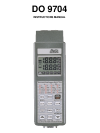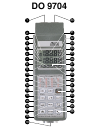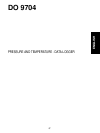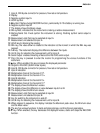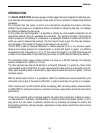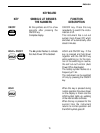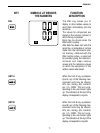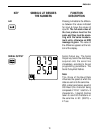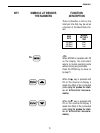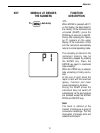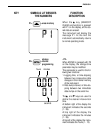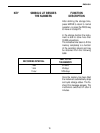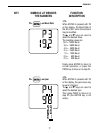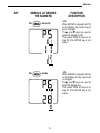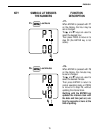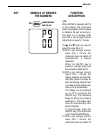
INTRODUCTION
The DELTA OHM DO 9704 pressure gauge and data logger has been designed for detecting pres-
sure, flow rate and temperature, physical values which are very important in industrial and chemical
processes.
The instrument has two inputs, A and B, and automatically recognises the probes connected,
whether they be pressure or temperature probes or turbines for measuring flow rate, and displays
the difference between the two inputs.
As the probes are interchangeable, it is possible to choose the most suitable combination for all
applications without having to recalibrate the instrument. The operating principle of the pressure
sensor is based on the bending of a membrane in a watertight chamber in contact with the flow of
which you want to measure the pressure. The flow may be liquid or gas. The flow rate measure-
ment is based on the number of impulses or the frequency of a small fan.
The DO 9704 is able to measure differential or relative pressure for air or non corrosive gases,
absolute and relative pressure for measurements in contact with liquids or gases, in 6 different
measurement units; temperature (in °C or °F); flow rate in the range for 2 to 2000 litres/minute with
a turbine in the measurement units LPM (litres per minute) or IGPM (Imperial Gallons per Minute).
The instrument’s Data Logger function enables it to store up to 30,000 readings. The sampling
period is variable from 1 second to 12 hours.
The data acquired may later be transferred to a Personal Computer or a printer by means of the
opto-insulated serial line RS 232C. For each value stored the date and time of acquisition are indi-
cated; each acquisition block is ended with a report which provides the maximum (peak), minimum
and mean values
With the Serial Output function it is possible to obtain the instantaneous values measured by the
instrument at the output of the serial line RS 232C, in order to send them to a printer or a computer.
Other functions such as HOLD (which blocks the display), REL (for taking relative measurements)
and RECORD (for storing the maximum, minimum and mean values) further enrich the instrument’s
performance.
Thanks to its versatility and to its storage capacity, the instrument is particularly suitable for pressu-
re measurements in hydraulics, fluidodynamics, in chemical plants and process controls, in pum-
ping plants; it is also useful in particular sectors such as moulding and presses for plastics and
thermosetting materials, chimney draught, compressors; it may also be used for flow rate and level
measurements.
ENGLISH
69



